#Daeodon
Explore tagged Tumblr posts
Text
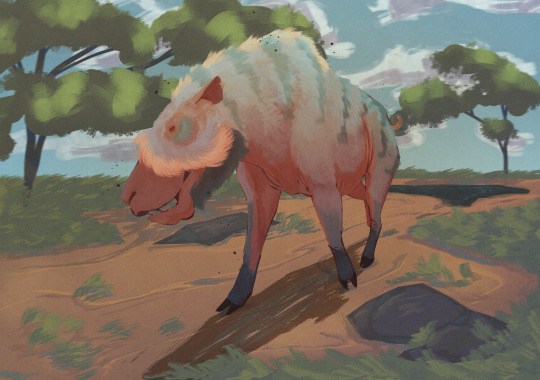
Quick entelodont painting with a design loosely inspired by the Bornean bearded pig. Poor guy is being bothered by biting flies and midges
Made an entelodont design like this a while back and enjoyed it. This is a revamped version that I'm not too sure if I'm happy with yet... Might redo this in the future.
Can you tell I don't like backgrounds? lol
#paleoart#paleoblr#entelodont#daeodon#original art#artists on tumblr#artyofaardvark#I had to nerf the quality again I am so sorry#curse you tumblr#I did record the process. Not sure if it could be posted to tumblr due to file size tho#Would anyone be interested in speedpaints of these? Like on youtube?#Also thank everyone for the likes on the azhdarchid post. They continue to make my day with every notification
245 notes
·
View notes
Text

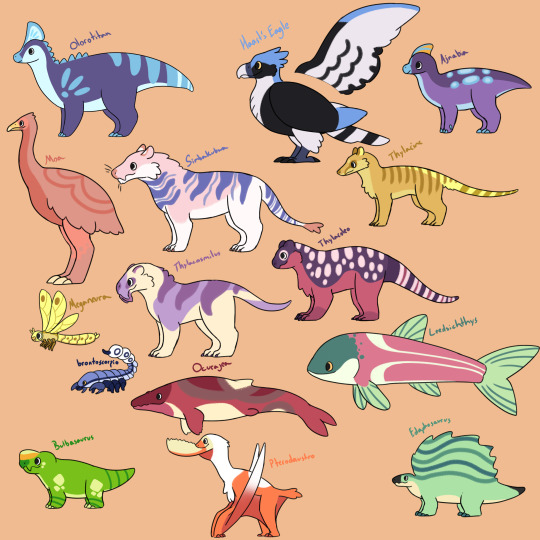

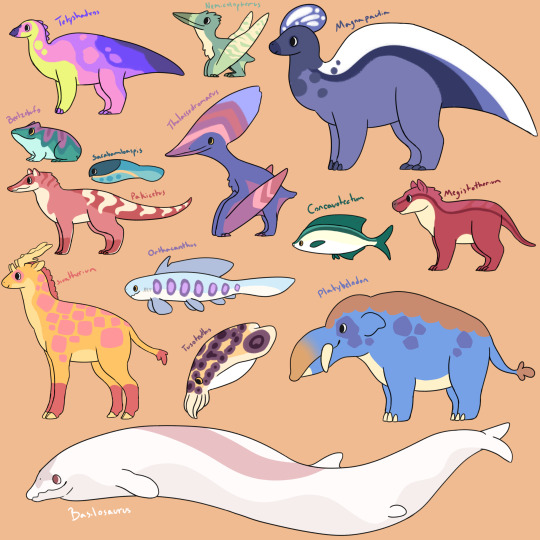
Alright yall have twisted my arm heres pages 6,7,8, and 9 (but trust me theres still more lol Ive got near upwards of 200 designs so far)
#paleo pines#art#my art#dinosaur#pterosaur#fish#mammal#insect#scorpion#synapsid#primate#shark#snake#cephalopod#whale#bird#livyatan#daeodon#plateosaurus#magyarosaurus#mosasaurus#patagotitan#janassa#helicoprion#concavenator#titanoboa#olorotitan#haast's eagle#ajnabia#moa
146 notes
·
View notes
Text

16/03/2025 Daeodon
31 notes
·
View notes
Text
DAY 16 - DAEODON

Daeodon shoshonensis, an omnivorous artiodactyl, and one of the largest entelodonts from North America during the early Oligocene - early Miocene, stares at you with the scars it got from fighting other males for dominance. (~29-16 Mya)
#marchmammals#paleoart#paleontology#mammals#mammal#animal art#animal#animals#daeodon#entelodont#artiodactyla#ungulate
16 notes
·
View notes
Text

I luuuuv me some paleo puns >:3
Yeee happy Valentine’s Day! I have more art on the way for today, buuut I wanted to post my main pic for today ^^ hope you all have a good one 😊
#ferels art#artists on tumblr#my art#art#entelodont#daeodon#valentines day#paleontology#paleoart#paleo pun#extinct animal#prehistoric#prehistoric animals#digital drawing#digital artist#pun#happy valentines#valentines day pun#my sona#sona#fursona
18 notes
·
View notes
Text
Diabolocervus, The Not-Deer, or my take on Not-Deer cryptid/creepypasta as a dangerous, foul-tempered and hog-eating Entelodontid, which i dubbed "Diabolocervus". NSFW for partially eaten feral hog.


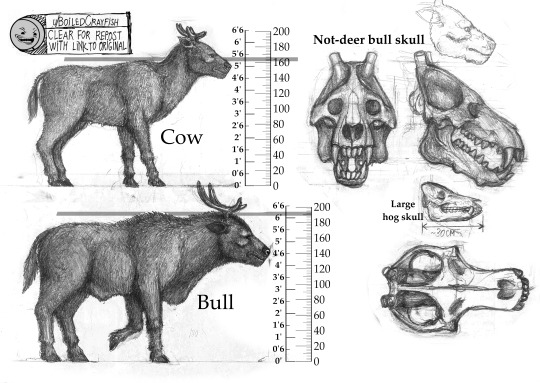
In the forests of the Appalachian Mountains, an elusive creature is said to be seen. It is said to resemble a normal deer when one looks at it from afar, yet this resemblance wanes steadily as you are closing the distance to it. Size that rivals that of the very largest bull moose(plural), heavier bodily build, long legs that are thicker than that of any actual deer, strange, seemingly undersized antlers and the form of its head are the features that catch one’s eye.
But the entirety of its ferocious exterior reveals itself when this animal is just in the several dozens of yards from whomever is looking at it, and even more is revealed when it is found after a successful hunt. It looks with the pair of sharp, forward facing eyes highlighted by thick, bright-colored brow ridges and characteristic, highly pronounced cheekbones. Underneath the wide snout remotely resembling that of a hyena, one sees a maw with massive canine teeth. The size and bulk of these jaws suggests that this beast is indeed capable of breaking skulls and legs with its monstrous bite. The coarse, tough coat of the Not-Deer resembles that of a wild boar rather than that of a deer. The tail is short, with a large dark brush. The hooves are unlike that of deers either - these are sharp and more separated, evolved for doubling as an offensive weapon.
The overall impression of this animal might remind the viewer about something that could exist in the ancient times, long before humans started walking straight, yet long after the extinction of dinosaurs. And it is, in fact, an actual descendant of such an animal. It is a vestige of the long-gone era of Miocene - an Entelodont, to be precise. Its “antlers” have, in fact, gradually evolved from enormous cheekbone protrusions seen in the skull of Archaeotherium. The reason why the bone growths of that particular Entelodont lineage moved upwards and to the back of the skull is a subject of debates. These “antlers” mostly consist of keratin, with only a lower, basic part of it being an extension of a skull, which resembles the horns of a pronghorn, despite being so different externally. Much like the pronghorn, the keratinous part of these horns gets shed and regrows annually. Female horns are usually smaller than that of bulls.
The brain compartment is several times larger than that of any other known entelodont, and enables this animal to have problem-solving skills, as well as an astonishing memory. The not-deer is an omnivore, and employs plenty of different strategies and tactics for hunting and foraging alike. For example, the diabolocervus can instantly switch one tactic for another when hunting a feral hog, its newly-emerged favourite prey. When a family unit of not-deers comes to forage for pine cones, the father bull, being of greater height, stands up to use his front legs and horns to drop the cones for the cow and calves. The not-deer’s ability to stand and walk on its extremely powerful hind legs is often used for reaching high-hanging food as well as for intimidation and defence.
The aforementioned intelligence could evolve under the pressure of advanced predators such as big saber-toothed and normal-toothed cats and short-nosed bears that were capable of robbing these entelodonts of their food supply, as well as hunt the entelodonts themselves. The reproduction rate of a not-deer is relatively low: 1-2 calves can be born after 1 year of pregnancy, with a maturity threshold of 4-5 years for cows and 5-7 years for bulls. Because of this, the not-deers have to use their intelligence for prolonged and meticulous biparental care for their offspring. Depending on exact environmental circumstances, the family unit may consist of 1 bull, 1-2 cows, 1-3 calves and 1-3 subadults. The overall number of specimens per family rarely exceeds 4-6 individuals. The sub-adult not-deers participate in protecting and helping younger calves, as well as aid their parents at hunting. Not-deer leaves its family when it reaches 450-600 kilograms of weight. In their period between leaving a family and creating their own, not-deers of both sexes form small male-only and female-only groups of 2-3 individuals. When it comes to contesting for females, not-deer bulls are relatively unaggressive towards each other, and prefer displaying feats of strength and intimidation rather than fighting each other directly. Even if the rare instance of fighting occurs, it doesn’t go past minor wounds. The not-deers generally prefer to hold a non-violent attitude towards each other, and are capable of solving their disputes through communication, for which they utilise diverse vocalisations and tail movements. However, they’re highly elusive and foul-tempered when it comes to interacting with other species.
As for its affection for the pork - feral hogs are abundant, and most of them are nearly defenseless even against a mature cow, let alone a mature bull. If a hog tries to attack a not-deer’s legs with its tusks, it gets a snout-breaking hoof strike - that is if it didn’t get the skull-crushing bite or bled from other wounds beforehand. The defending hog has very few chances of ever damaging the not-deer’s high-slung body, while not-deer can wreck this prey with both kicks and bites. While the hog can utilise its maneuverability in the forest, a family unit of not-deers is oftenly capable of driving the hog to an open terrain and catching it there.
#cw: gore#animal death#meat#feral hogs#entelodont#daeodon#archaeotherium#not-deer#deer#speculative evolution#hell pig#predator#omnivore#monster art#monter design#speculative biology#speculative zoology
11 notes
·
View notes
Text



Epochtober Day 4: Miocene (Daeodon) 🐖 #digitalart #procreate #digitalpainting #epochtober #paleoart #paleontology #miocene #daeodon #horror (Warning ⚠️: Blood 🩸)
23 notes
·
View notes
Text

Two different kinds of mammal mothers and their calves bonding together: Daeodon shoshonensis at the top and Orcinus orca at the bottom. Cetaceans and Entelodonts are also closely related to each other and to Hippos within the Artiodactyla.
#paleoart#paleontology#daeodon#entelodont#cenozoology#cenozoic#mammal paleontology#mammal#mammals#orca#orca whale#orcas#killer whale#killer whales#cetaceans#cetacean#early miocene#miocene#pliocene#neogene#mother’s day#mothers day#mother’s day 2024
45 notes
·
View notes
Text


Purlovia and Daeodon
6 notes
·
View notes
Note
Hey, jaune, I heard you were fighting big prehistoric lizards and so I thought to give you a pet for your son/nephew Adrian a puppy and by puppy I mean.

A popcross studios nightfury from httyd
Enjoy 😁
Jaune: I'm fighting what?! Since when was this a THIIIIIIIIII
Pyrrha: (Petting Pigsy) Is it weird that I'm starting to feel normal about all these creatures suddenly showing up?
Nora: (Rubbing Chompy's belly) I mean, I'm totally normal about it. What about you, Ren?
Ren: (Under Wrestley) Why me...
Nora: See? He's used to it, too. So, how long do you think until Jaune comes down?
Jaune: (Swung around on loop-de-loops)
Pyrrha: Hopefully, not for a while and preferably safely.
#rwby#jaune arc#nora valkyrie#pyrrha nikos#lie ren#how to train your dragon#giganotosaurus#daeodon#nightfury#kaprosuchus
29 notes
·
View notes
Text


I decided to post my ocs for @billfrancois' elwood tales here!
So here is the raven trio consisting of a Kenku druid, his 6'8" knight wife and their pet/companion Daeodon Warg, Lechon!
#my artwork#elwood tales#dnd#fantasy#ocs#daeodon#warg#kenku#dnd kenku#kenku oc#dnd druid#fighter dnd
7 notes
·
View notes
Text

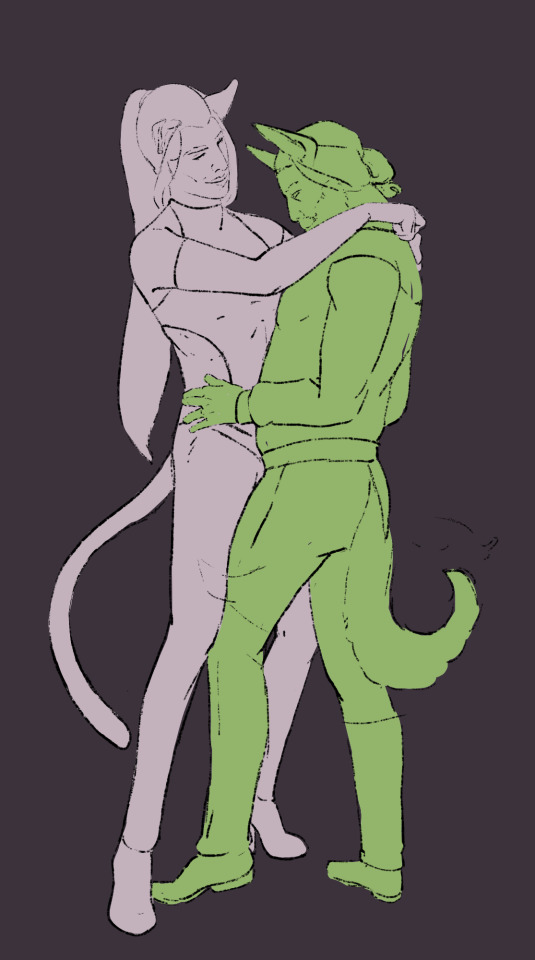
I know I said I was done but Apparently that was a lie
45 notes
·
View notes
Text


Daeodon ""hell pig""
7 notes
·
View notes
Text

†Daeodon shoshonensis
Art credit: Gabriel Ugueto
Living 15-30 million years ago in North America, Daeodon was part of a group of animals known as entelodonts, or hell pigs. Standing some six feet tall, Daeodon lived in the savanna environment which seems to have dominated the USA at the time. It was like a cursorial, hoofed bear, eating nuts, roots, tubers, leaves, vines, and carrion, and hunting big game when the opportunity presented itself. Males used their teeth and possibly the bones jutting out from their face to fight each other for dominance.
#markhors-menagerie#animal facts#animals#biology#fun facts#ungulates#even toed ungulates#pigs hippos & kin#entelodonts#Daeodon#palaeontology#prehistoric animals
15 notes
·
View notes
Text

Black Colossus
27 notes
·
View notes
Text

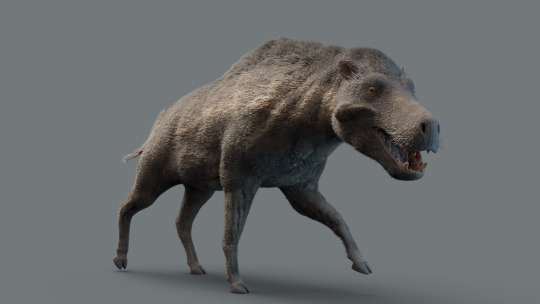




Daeodon
(temporal range: 29-15.97 mio. years ago)
[text from the Wikipedia article, see also link above]
Daeodon is an extinct genus of entelodont even-toed ungulates that inhabited North America about 23 to 20 million years ago during the latest Oligocene and earliest Miocene. The type species is Daeodon shoshonensis, described by a very questionable holotype by Cope. Some authors synonymize it with Dinohyus hollandi and several other species (see below), but due to the lack of diagnostic material, this is questionable at best.
Another large member of this family, similar in size to Daeodon, is the Asian Paraentelodon, but it is known by very incomplete material.
16 notes
·
View notes